
All categories
Featured selections
Trade Assurance
Buyer Central
Help Center
Get the app
Become a supplier

(18317 products available)
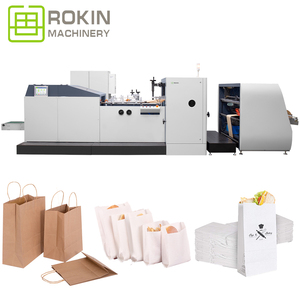

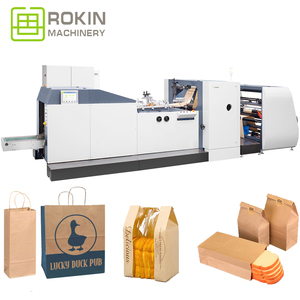





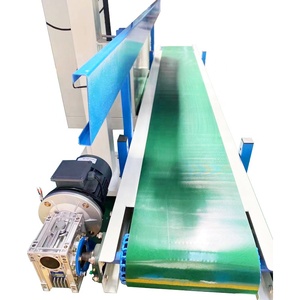
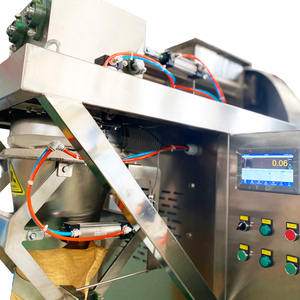






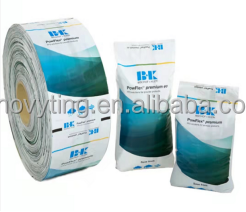

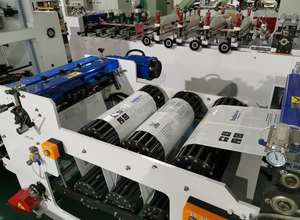






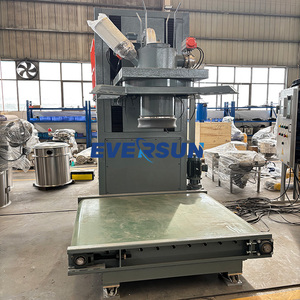

Market Overview: The global market for cement bagging machines is part of the broader bagging machines segment, which grew from USD 11.50 billion in 2023 to USD 12.06 billion in 2024. It is projected to continue this upward trajectory, achieving a CAGR of 5.04%, reaching USD 16.23 billion by 2030, according to 360iResearch. This growth is fueled by the increasing demand for efficient packaging solutions in the construction sector, particularly as infrastructure projects expand globally. The cement industry's flourishing activities, especially in regions like the U.S. and China, significantly contribute to this demand as they seek automation and efficiency in their operations.
Regional Insights: The market for cement bagging machines is heavily influenced by regional growth dynamics. For instance, the U.S. market is expected to see robust growth due to ongoing construction and renovation efforts, while China is projected to grow at a remarkable 6.5% CAGR, reaching USD 4.3 billion by 2030, as highlighted by Global Industry Analysts. Additionally, consumer behaviors are shifting towards automation, with companies increasingly preferring advanced bagging technologies that enhance productivity and reduce labor costs. Key players in this sector are innovating to address customer pain points, such as operational efficiency and sustainability, by integrating advanced technologies and sustainable practices into their machinery offerings. This trend indicates a strong future for cement bagging machines as they adapt to meet the evolving needs of the construction industry.
A cement bagging machine is a piece of equipment used in the cement industry for packaging cement in various types of bags. Such machines are essential components in cement plants and are also used in granule product packing lines. Cement bagging machines come in different types and variations, as described below:
Cement (Packing) Plant
A cement packing plant primarily focuses on the optimal bagging of cement. It plays a crucial role in the overall cement production and supply chain. The design and layout of modern cement packing plants are focused on efficiency, minimal manual intervention, and adherence to safety and quality standards.
Cement Bagging Machine
A cement bagging machine is an automatic packaging device that fills and seals bags for cement or other granular materials. It is usually part of a complete packing line and is also known as a bag filler or bagging line. Modern cement bagging machines are designed for high-speed filling and may incorporate features such as dust control, automated sealing, and stacking provisions. The machine may use different bag closure methods, including heat seal, adhesive, or snap closure, and is also known as a cement bagger.
Jumbo Bag Filling Machine for Cement
A jumbo bag filling machine for cement is used to fill large, heavy-duty bags (often called FIBCs - Flexible Intermediate Bulk Containers or simply Jumbo Bags) with cement or other bulk materials. These bags typically have a capacity of 500 kg to 2000 kg and are used for efficient handling and transportation of bulk materials. The machines are designed to handle the specifics of filling these oversized, flexible bags, which may require temporary stiffening of the bag, exact filling control, and sometimes methods to de-aerate the filled bag.
Cement Bag Labeling Machine
A cement bag labeling machine is a device used to apply labels to bags of cement (or other products) accurately. The machine may be semi-automatic or fully automatic and can apply labels to bags at high speeds. Some models can apply labels to bags of varying sizes and are often adjustable to accommodate different bag types and label dimensions.
Cement Silo
A cement silo is a storage container for cement or other granular materials. Silos can be used in conjunction with a bagging machine to supply cement on a continuous basis. Silos are often used in construction, batching, and mixing facilities to store cement close to the point of use.
Plumbed In Cement Bagging Machine
The plumbed-in cement machine refers to bagging machines that are directly connected, i.e., "plumbed-in," to a storage or supply system (e.g., a cement silo). This configuration allows for a continuous supply of material to be bagged, increasing efficiency and streamlining the production process. It is a suitable option for facilities requiring high throughput and minimal manual intervention in the bagging process.
Cement Packing Scale
A scale cement packing is a device for measuring and packing cement or other granular materials. It weighs the product to be packed (often in a pre-defined container or bag) and may also be responsible for the filling process. Packing scales may be based on weight (i.e., load cells and electronic scales) or volume (i.e., volumetric feeder systems).
The specification of cement packing machines differs depending on the type. Here are some key specifications for diverse kinds of cement bagging machines.
Bagging Speed
The highest quantity of bags the machine can fill per hour typically indicates the machine's productivity rate. Based on the machine's specifications, an automatic bagging machine for cement can reach a speed of 4000 to 6500 bags per hour.
Bag Handling System
The bag handling system transports, seals, and stacks the bags. The system is normally integrated and automated, which streamlines operations. It minimizes handling requirements manually. Depending on the setup, the bag handling system can include conveyors, robts, and stackers.
Bag Type
Cement bagging machines can handle different bags, such as Polywoven, Pulp & Paper, and PP with EVA. Each has different sealing methods. For instance, P bags require sealing with heat or glue, while FFS bags require seals with PE.
Accuracy
Accuracy is significant in cement bagging. Measuring and filling units ensure that the cement quantity is correct for each bag. These units usually include scales, counters, and sensors to measure precision down to tenths of a kilogram or gram.
Integration with other Systems
Cement bagging machines can connect with other systems like mixing plants, conveyors, and palletizing systems. Depending on the plant's automation level, integration can be partial or complete.
There are essential maintenance tips for cement bag packing machines.
Scheduled Inspections
The scheduled inspections of bagger machines are significant. Operators should look at the machine while it packs cement into bags. During these inspections, operators should check the moving parts, electrical components, and sensors and see if they are working right. Doing these recommended inspections allows them to spot machine conditions and fix problems before they worsen. In some cases, using the machine manuals and services records is necessary and helpful.
Regular Cleaning
Cleaning the machine parts to maintain its functions and efficiency is essential. Dirt and cement dust can block critical parts like sensors and scales. As a result, their accuracy won't be precise. When operators clean the machines, they remove dust and debris that may cause issues later. A clean machine works well longer and decreases the need for repairs.
Industrial cement packaging:
Cement plants usually have large output, so they need efficient packaging machines to ensure that cement can be packaged and processed at a high speed. At the same time, the quality and stability of the machine are crucial, as they have to adapt to continuous production and a large amount of work.
Flexible packing mode:
Some factories need to provide different sizes and types of bags of cement for various customers and markets. This may include adjusting the size and weight of cement bags, as well as using different packaging materials and technologies.
Packaging requirements for different types of cement include: adjusting the size and weight of cement bags, as well as using different packaging materials and technologies; ensuring that the cement is not contaminated or damaged during the packaging and transportation process; using suitable bag materials and sealing methods to prevent moisture and leakage; labeling and coding bags of cement according to regulations and customer requirements for identification and traceability.
Automation integration:
Cement plants need to integrate automated bagging machines with other production lines, such as mixing, conveyor, and sealing systems, to realize the full automation of the cement bagging process, thereby improving production efficiency and reducing labor costs.
Sustainability and recycling:
Packaging sustainability has become an important issue, and cement plants need to consider the environmental impact of packaging practices. Choosing recyclable packaging materials and optimizing the packaging process to reduce waste and energy consumption will help cement plants achieve sustainability goals.
When buying a cement bagging machine, buyers need to consider several factors to ensure they get the best machine.
Production requirements
First, they should determine their production requirements. This includes the amount of cement in bags they need to produce each day and the desired level of automation. Knowing these requirements helps them choose a machine that is the right capacity and has the right features.
Types of bagging machines
There is a variety of cement bagging machine
s, including manual, semi-automatic, and fully automatic machines. Buyers need to consider their budget and the level of automation they desire.
Accuracy and precision
They should look for machines that offer high accuracy and precision in weighing and filling to minimize product loss and ensure customer satisfaction.
Machine durability and maintenance
Since a cement bagging machine is an investment, buyers should consider the machine's durability and maintenance requirements and look for machines that are easy to maintain and built to last.
Supplier support
Lastly, buyers should consider the support provided by the supplier and choose a supplier who offers excellent customer service and technical support.
Q1: What is the cement bagging machine used for?
A1: The cement bagging machine is mainly used to pack cement into bags. It is the ideal machine to load cement into bags for storage or transportation.
Q2: How does the cement bagging machine work?
A2: The machine feeds bulk material into an accurate weighing system. Once the material is weighed, it is released into the bag/seal where it is placed in. This process occurs repetitively to bag cement in large quantities efficiently.
Q3: Can the cement bagging machine be used for other materials besides cement?
A3: Yes, some cement bagging machines can be used for other abrasive and granular materials, such as flour, salt, sugar, sand, and pesticides, among others.
Q4: Is the cement bagging machine suitable for small-scale operations?
A4: No, cement bagging machines are mainly used for large-scale operations due to their high efficiency and speed.
Q5: Can the bagging machine be integrated with other systems?
A5: Yes, most modern cement bagging machines can be integrated with other systems such as conveyors, feeders, and sealers.